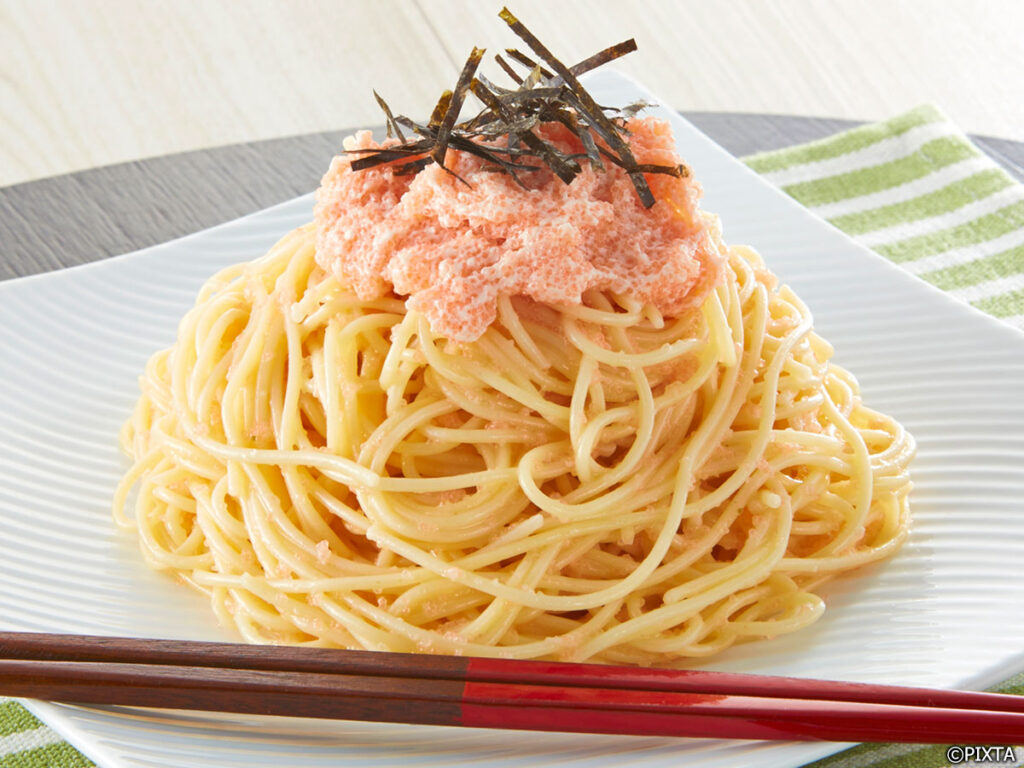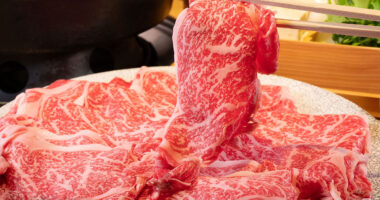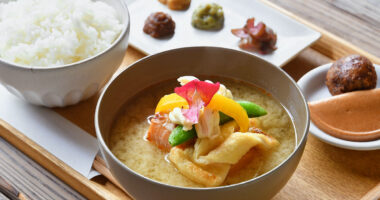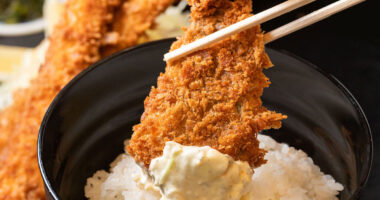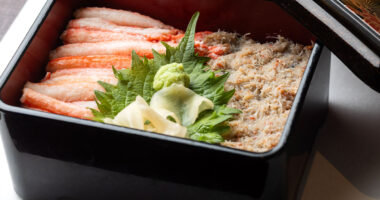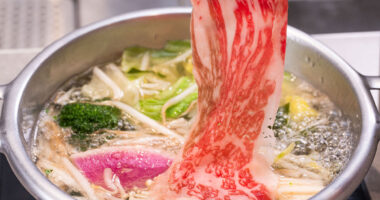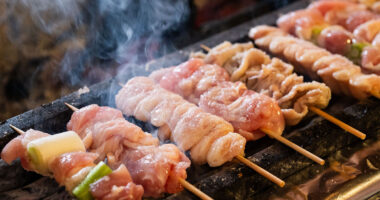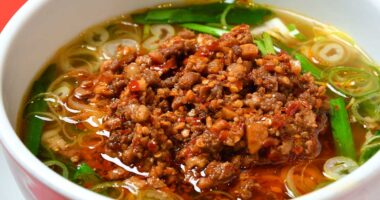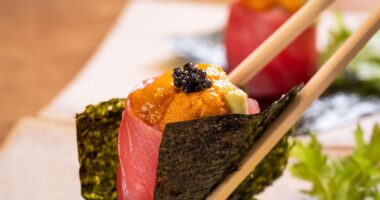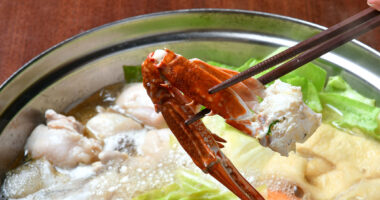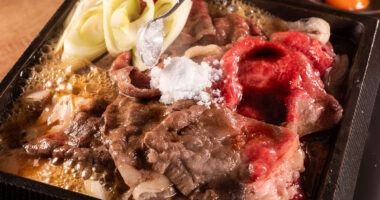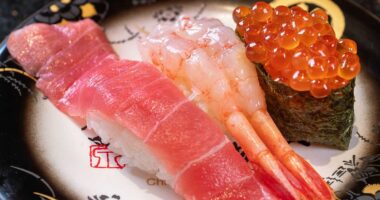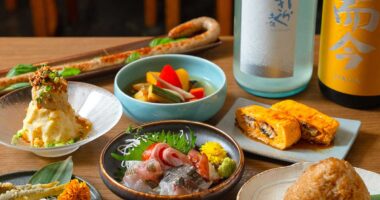Every visit to Japan promises a plethora of culinary experiences. Among sushi, ramen, tempura, and the rest of traditional Japanese fare, there lies a hidden gem – Japanese pasta. This delightful fusion of Italian pasta and Japanese ingredients and flavors has been stirring up the gastronomic world with its creativity and deliciousness.
What is Japanese Pasta?
Japanese pasta, as the name implies, brings together traditional Italian pasta and Japanese cuisine’s unique flavors and ingredients. While all types of pasta can be used, spaghetti is predominantly used as the foundation for these dishes.
In Japanese pasta dishes, the sauce and ingredients often take the spotlight, served atop the pasta, as opposed to being mixed in as seen in Italian dishes. This not only presents a visual feast but also allows each ingredient to shine individually. Creamy sauces find a notable place in Japanese pasta, showcasing a fascinating contrast to their traditional Italian counterparts. This difference is most evident in the Japanese adaptation of Carbonara which diverges from its Italian origin through the inclusion of heavy cream along with the traditional egg and cheese.
Where to Get Japanese Pasta
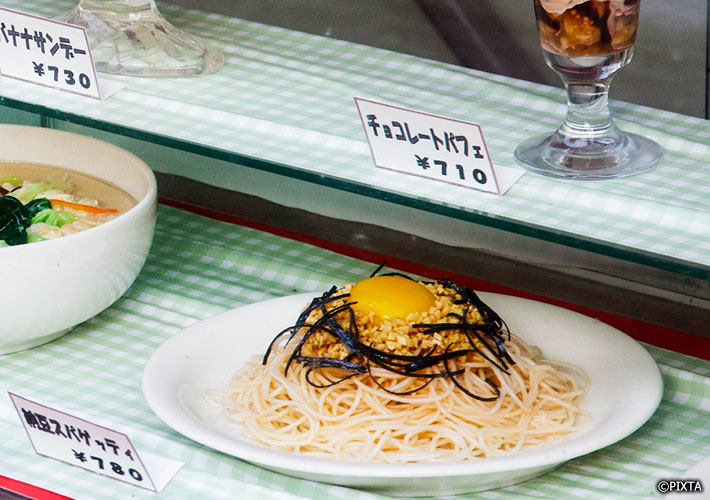
A display of natto spaghetti shares window space with other dishes at a Tokyo eatery.
While on your culinary exploration in Japan, you’ll come across a variety of eateries offering their unique take on Japanese pasta. These dishes can be discovered in traditional Italian restaurants, trendy fusion bistros, izakayas, and family-style diners. There are even chains specializing in this category. Often, you’ll find a section in their menu dedicated to Japanese-style pasta, where these locally-inspired pasta dishes make their appearance.
Some local cafeterias also feature budget-friendly versions of these pastas, making them accessible to all types of travelers. And for those on-the-go, pre-packaged pasta dishes can be found in convenience stores as well as the prepared foods section of supermarkets, providing a quick, affordable, and tasty meal option.
Types of Japanese Pasta Dishes
Japanese pasta cuisine is rich and diverse, with each dish offering a unique blend of flavors and textures. The naming convention for these dishes either uses パスタ pasuta (pasta) after the ingredients, or スパゲッティ supagetti to indicate it features spaghetti. Here’s a closer look at some of the most popular variants:

Mouth-watering mentaiko spaghetti.
たらこ tarako and 明太子 mentaiko: This dish marries pasta, usually spaghetti, tossed in butter or olive oil, with either tarako or mentaiko, two similar types of salted cod roe. Tarako spaghetti, the more popular iteration, usually boasts a milder flavor profile by using tarako, salted cod roe prepared without additional seasonings, resulting in a subtly umami-rich dish. Conversely, mentaiko spaghetti uses mentaiko, cod roe which is salted and seasoned, often with chili pepper, introducing a gentle spicy kick and adding to the depth of umami. Diverse adaptations may include a dash of soy sauce or fresh cream for enhanced richness. Garnishes such as dried seaweed (nori) and spring onions are also common, offering an additional layer of texture and flavor.
納豆 Natto: Certainly a dish for the more adventurous, natto pasta combines the distinctive flavor and texture of fermented soybeans with spaghetti. This dish embraces the sticky, stringy nature of natto, incorporating it with simple seasonings like soy sauce, mustard, and finely chopped green onions. Sometimes, a raw egg is added on top. Despite its unique flavor, it’s a nutrition-packed dish worth trying.
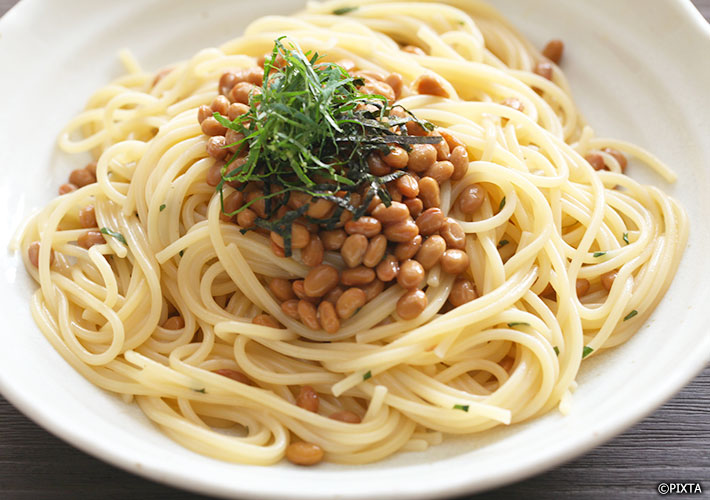
Natto spaghetti is a uniquely Japanese pasta dish.
バター醤油 batā shōyu Butter and Soy Sauce: At its simplest, this dish involves sautéing cooked spaghetti in butter, then seasoning it with soy sauce. However, it’s also often used as a base for seafood or meat ingredients. Often, thinly sliced green onions are added on top for an extra burst of flavor.
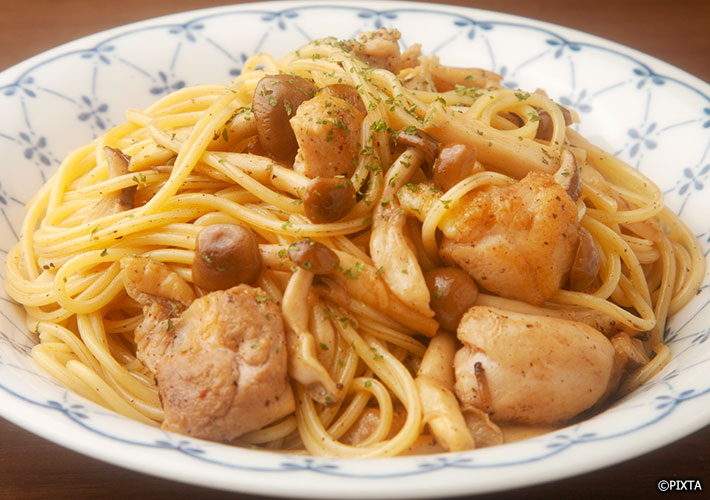
Butter and soy sauce spaghetti with chicken and mushrooms.
和風 wafū “Japanese-style”: With the exception of the creamy pasta variants mentioned below, all Japanese pasta types can potentially be wafū. This category covers a wide range of pasta dishes that utilize traditional Japanese ingredients. The sauce is typically soy-based, with ingredients like mushrooms, Japanese leek (negi), spinach, cabbage and various other vegetables, as well as seafood like clams, whitebait or shrimp. A popular combo features bacon and mushrooms, where the saltiness of the bacon complements the earthiness of the mushrooms, tied together with a soy-based sauce. Garnishes like shiso leaf and grated daikon may also make an appearance.
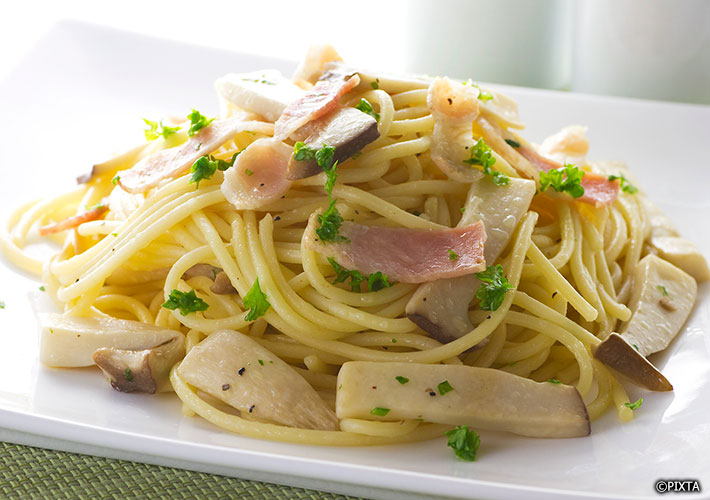
A typical wafu spaghetti with cabbage, bacon and king oyster mushrooms.
Clam and sake: Here, in a Japanese twist on spaghetti alle vongole, spaghetti is tossed in a delicate sauce made from clams steamed in sake. This light, briny dish captures the essence of the sea, and is usually garnished with a sprinkle of nori or green onions.
Carbonara variants: As mentioned earlier, Carbonara in Japan often comes with a creamy twist. It’s not unusual to find versions like 明太子カルボナーラ Mentaiko Carbonara, which adds spicy cod roe to the classic creamy dish, or 味噌カルボナーラ Miso Carbonara, where the salty, umami-rich miso paste is mixed into the cream sauce for an added depth of flavor.
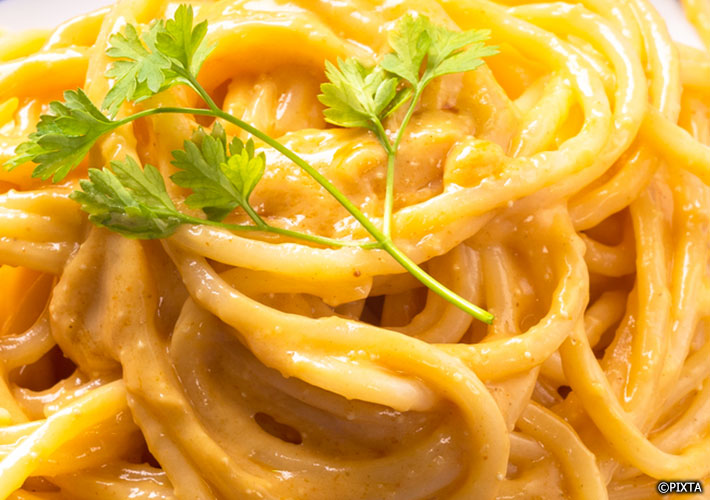
Close-up on a creamy dish of mentaiko carbonara.
カニクリームパスタ kani kurīmu crab cream: This luxurious pasta dish showcases crab meat in a velvety sauce, usually blending tomato and cream. The richness of the crab is beautifully balanced by the creaminess of the sauce, often brightened with a hint of lemon. Variants without tomato sauce can also be found.

Crab cream pasta is one of the more luxurious types of Japanese pasta available.
ウニ (also written うに or 雲丹) uni sea urchin: Another delicacy from the sea, uni pasta, features the creamy, sweet taste of sea urchin. The freshness of the sea urchin is key to this dish, often topped generously on a bed of buttery spaghetti. A hint of soy sauce or a squeeze of lemon can be added to enhance the flavors further.
Another popular pasta dish unique to Japan is ナポリタン naporitan, or “Napolitan” pasta, a dish of spaghetti pan-fried in ketchup and other ingredients. You can read more about it as well as other 洋食 yōshoku, or Western-influenced Japanese dishes, in our article here.
When it comes to pricing, Japanese pasta dishes can range from budget-friendly options under 1,000 JPY in casual dining spots to high-end offerings in upscale restaurants costing upwards of 5,000 JPY. A plate of pasta in an average restaurant can cost anywhere between 800 to 2,000 JPY, depending on the ingredients used.
Tips for Enjoying Japanese Pasta
When exploring the world of Japanese pasta, the first and most important tip is to approach it with an open mind. Japanese pasta is a fascinating blend of Italian tradition and Japanese culinary innovation. It is essential to appreciate these dishes not as derivatives of Italian pasta, but as unique interpretations that showcase a delightful fusion of flavors.
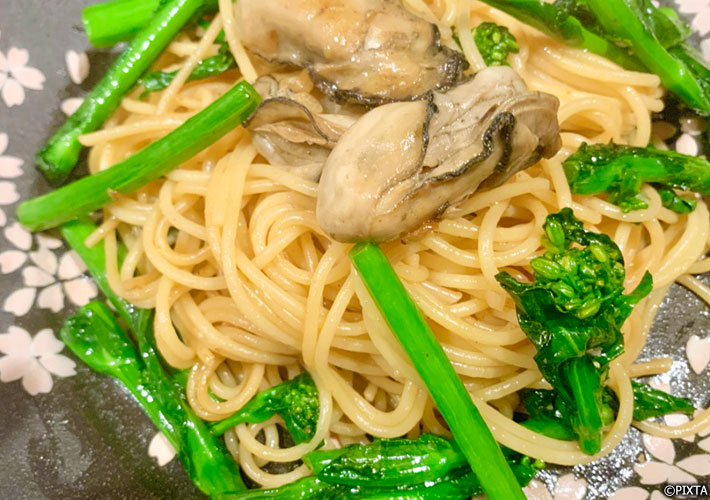
Spring veggies like flowering canola plant and oysters combine in a spring pasta dish.
Many restaurants in Japan frequently update their menu according to the season, using ingredients at their peak to ensure the best taste. This practice extends to pasta dishes, with offerings often reflecting the time of year. Be sure to check out any seasonal specials when ordering, as these will allow you to experience the freshness and variety of Japanese ingredients.
In Japanese dining culture, it’s not uncommon to share dishes among a group. This tradition offers a great opportunity to try a variety of pasta dishes in a single meal. Consider ordering a few different pasta dishes to share with your dining companions. This way, you can experience a broader spectrum of flavors and ingredients.
In sum, Japanese pasta dishes offer a fresh, intriguing spin on a familiar cuisine. These dishes, marked by their creativity and unique flavor profiles, embody Japan’s remarkable ability to blend the old with the new, the local with the foreign. As you venture into the world of Japanese pasta, remember to embrace the unexpected – this is Japan’s unique interpretation of pasta, and it’s definitely worth exploring.
